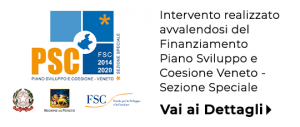Indice dei contenuti
ToggleIn the factory there are no “HR issues” and “production issues”.
There are only problems to solve. And one above all has become too big to ignore:
workforce management in production.
For years, this process has been managed using artisanal methods: Excel spreadsheets, whiteboards, email or verbal communications. It worked, but now it’s no longer enough.
Operational complexity has increased, there are too many variables, and the margin for error is too narrow.
Those who don’t evolve their approach risk turning “shift management” into a brake on the entire production process.
In this paper, we explore what it means to manage people well on the factory floor today, the most common warning signs, and how the way companies large and small address this critical issue of operational efficiency is changing.
Today’s challenges cannot be solved with yesterday’s tools
The modern factory is a system that moves on three levels:
- the variability of demand (tight deadlines, different formats, continuous flexibility)
- the growing pressure on operator safety, compliance and well-being
- the increase in organizational complexity (more shifts, more figures involved, more skills to track)
But when you look closely at the models used to manage people in production departments, the gap is evident.
According to a research conducted on 50 production plants with workforces ranging from 30 to over 2,000 employees, before the adoption of structured workforce management models:
- 63% of companies managed shifts with non-integrated tools, often Excel or paper models
- 78% did not have an updated system to track actual skills
- 80% recorded critical information such as physical limitations and DVRs only on separate files
- In none of the companies examined was there a single platform that integrated HR, production and safety
Yet we are talking about processes that have an impact every day:
- the quality of the product
- the safety of people
- the continuity of the line
- the organizational climate
- regulatory compliance
- OEE and cost control
The ten signs that are telling you: “This can’t happen anymore”
From the interviews conducted at these 50 plants (in Italy, Germany, and Romania), some recurring patterns emerged.
We list them here because they are warning signs you probably recognize.
1. The planner always works in an emergency situation – Every day begins with a rush: who’s missing? Who can replace whom? Who has the skills?
2. Shifts are still managed on Excel, email, or whiteboards – Every change is manual, every mistake impacts quality.
3. Data is scattered across departments that don’t communicate with each other—HR manages vacations and absences, Production handles shifts, and Safety handles eligibility. No one has a complete picture.
4. Knowledge is in the planner’s head – When the “key” person is absent, the factory grinds to a halt or is left to its own devices.
5. Skills aren’t visible – Who can do what? Who can mentor a new hire? Who is losing skills due to lack of exposure?
6. Physical limitations aren’t integrated into the plan – The risk of assigning a job that isn’t suitable for the candidate is real. And it often happens.
7. Communications with employees are fragmented – Permissions, shift changes, holidays: everything is handled “roughly,” with a thousand steps and zero traceability.
8. Interdepartmental loans aren’t monitored – No one knows where the operators have gone. Time reporting is a treasure hunt.
9. Operator suggestions get lost – Ideas for improvement, reported problems, feedback: there is no system to enhance them.
10. Information silos slow everything down – When HR, Production, HSE and Management Control work on different tools, coordination is impossible.
Why we need a true workforce management model
Workforce management isn’t software. It’s an operating system for managing the workforce.
When well-designed, it allows you to:
- Plan consistently with skills, suitability and contractual constraints
- Rebalance shifts in real time
- Automate substitutions in case of absences
- Track skill growth (or loss) over time
- See staffing gaps before they become problems
- Involving operators in daily management
- Integrate HR, Production, Security and Control into a single control room
And most importantly, it allows you to switch between:
| From… | To… |
| Sheets, notes, memory | Integrated and updated data |
| Reactive decisions | Proactive and simulated decisions |
| Invisible skills | Skills mapped, tracked, valued |
| Stress del planner | Automation and intelligent delegation |
| Silos between departments | Structured collaboration |
Beyond Digital: The Concrete Benefits Companies Are Beginning to Measure
In the 50 factories analyzed, after at least six months from the introduction of a digital model for workforce management, significant improvements were observed:
- –75% time dedicated to employee planning
- –90% time spent communicating with the workforce
- –90% time to update the skill matrix
- –72% reduction in security-related legal litigation risks
- –76% accidents at work
- +0.8% / +1.2% improvement in average plant OEE
These aren’t “soft benefits.” They’re measurable economic and organizational impacts that impact productivity, internal climate, and sustainability.
Conclusion: before talking about technology, let’s talk about method
Managing people in the factory is no longer just a matter of common sense and flexibility.
It’s a strategic lever that must be designed, measured, and managed with the same attention paid to plants or the supply chain.
The good news?
There’s no need to revolutionize everything, you just need to start.
- Observing the signs of inefficiency
- Involving all functions
- Thinking of the factory as a coordinated ecosystem
- And putting people – really – at the center
Because when a line stops, the first question isn’t “what happened?”
It’s “who was there?“
Read the full research > > click here!
